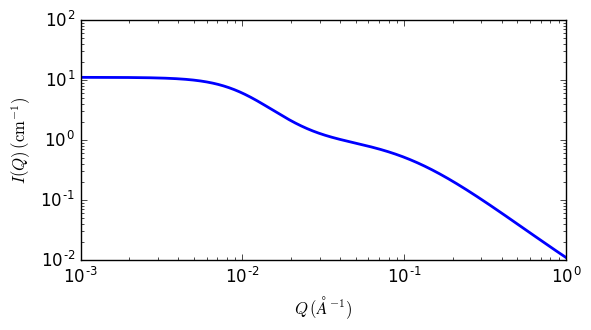two_lorentzian
This model calculates an empirical functional form for SAS data characterized by two Lorentzian-type functions.
| Parameter | Description | Units | Default value |
|---|---|---|---|
| scale | Source intensity | None | 1 |
| background | Source background | cm-1 | 0.001 |
| lorentz_scale_1 | First power law scale factor | None | 10 |
| lorentz_length_1 | First Lorentzian screening length | Å | 100 |
| lorentz_exp_1 | First exponent of power law | None | 3 |
| lorentz_scale_2 | Second scale factor for broad Lorentzian peak | None | 1 |
| lorentz_length_2 | Second Lorentzian screening length | Å | 10 |
| lorentz_exp_2 | Second exponent of power law | None | 2 |
The returned value is scaled to units of cm-1 sr-1, absolute scale.
Definition
The scattering intensity \(I(q)\) is calculated as
where \(A\) = Lorentzian scale factor #1, \(C\) = Lorentzian scale #2, \(\xi_1\) and \(\xi_2\) are the corresponding correlation lengths, and \(n\) and \(m\) are the respective power law exponents (set \(n = m = 2\) for Ornstein-Zernicke behaviour).
For 2D data the scattering intensity is calculated in the same way as 1D, where the \(q\) vector is defined as

Fig. 107 1D plot corresponding to the default parameters of the model.
References
None.
Author: NIST IGOR/DANSE on: pre 2010
Last Modified by: Piotr rozyczko on: January 29, 2016
Last Reviewed by: Paul Butler on: March 21, 2016